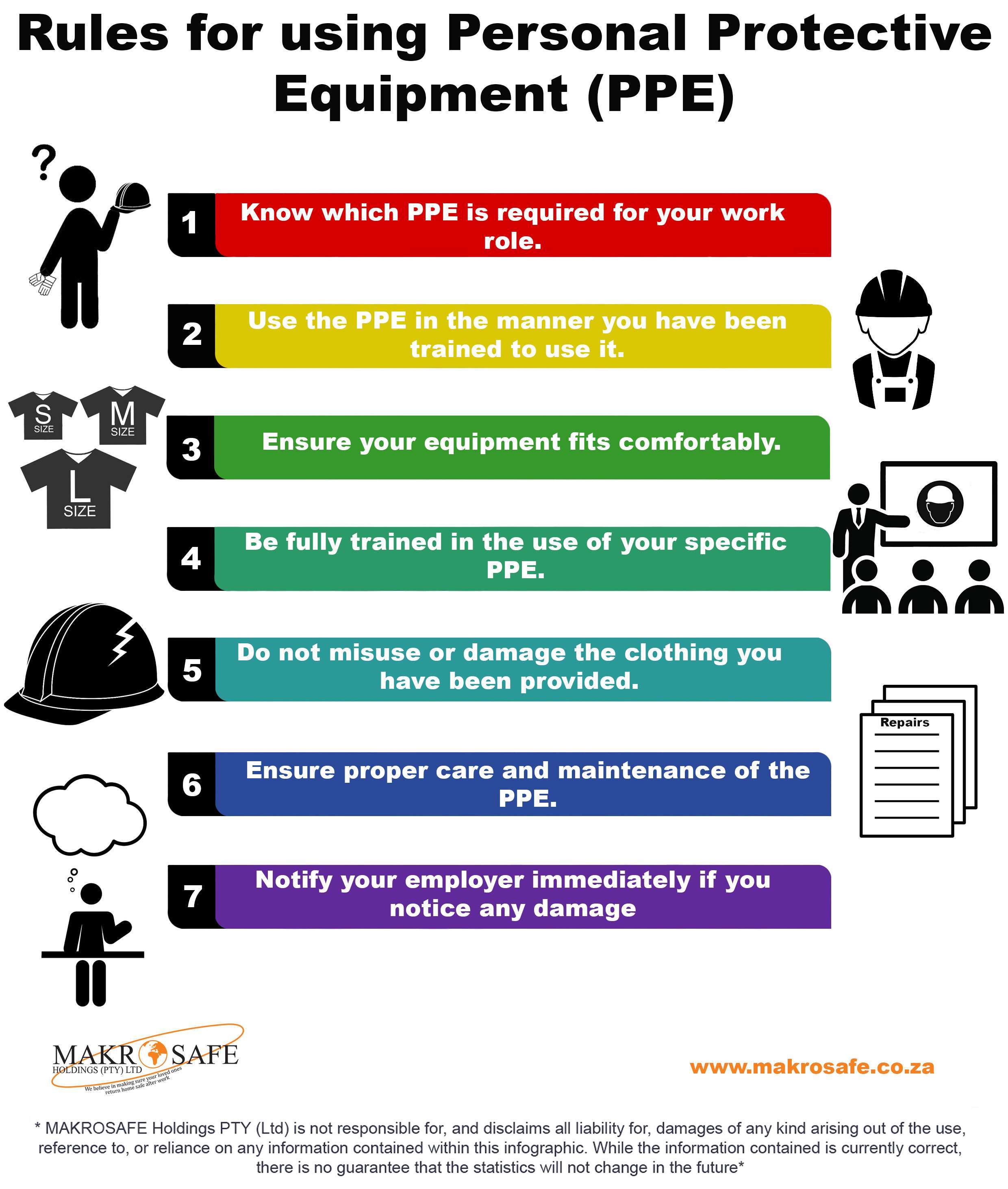Rules for using Personal Protective Equipment (PPE)
Personal Protective Equipment (PPE) is worn to minimise exposure to hazards that could cause illness or injury. There are a number of ways that failing to use PPE could be life-threatening, and the risks include chemical, radiological, physical, electrical, and mechanical hazards.
Personal Protective Equipment (PPE) is identified as a Control Measure in the Task Risk Assessment. For every Taks in the Risk Assessment a Safe Operating Procedure (SOP) must also be writen. 
The rules for using PPE include the following:
- Know which PPE is required for your work role. This can include the following: gloves, safety glasses, steel-toed shoes, earplugs or muffs, hard hats, coveralls, and others.
- Use the PPE in the manner you have been trained to use it.
- Ensure your equipment fits comfortably. Items that are too big or too small could expose you to danger.
- Be fully trained in the use of your specific PPE. This includes when to use it, what type is required for specific jobs, how to properly wear and take it off, as well as the limitations of the equipment.
- Do not misuse or damage the clothing you have been provided.
- Ensure proper care and maintenance of the PPE.
- Notify your employer immediately if you notice any damage or malfunction, or if you need to clean or sterilise the PPE.
Follow the link below to My Safety Shop for all your Health and Safety needs:
Posted date: 26th Feb 2018
Personal Protective Equipment (PPE) - Risk Assessment - Industries 



Leave a comment